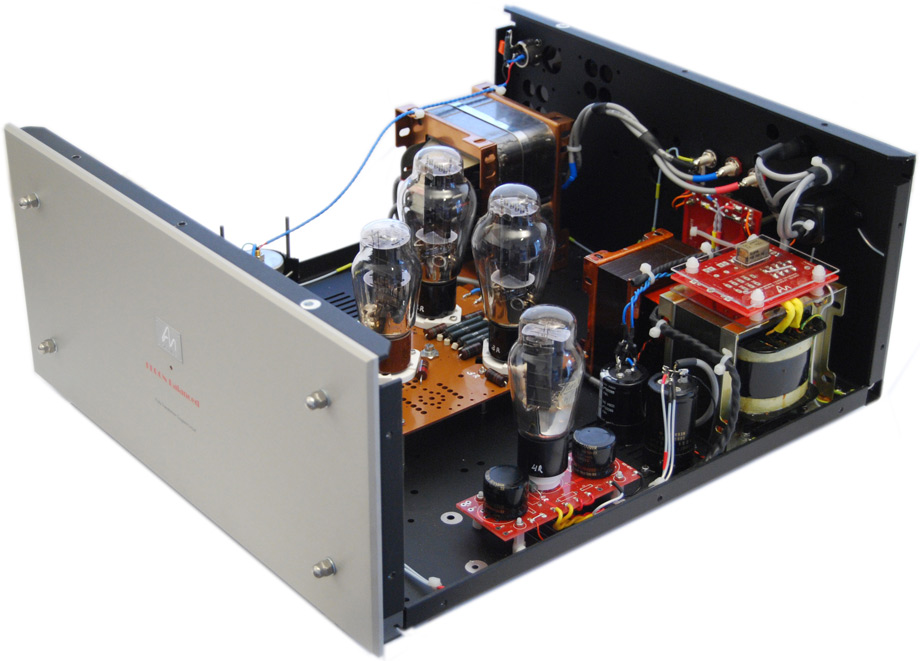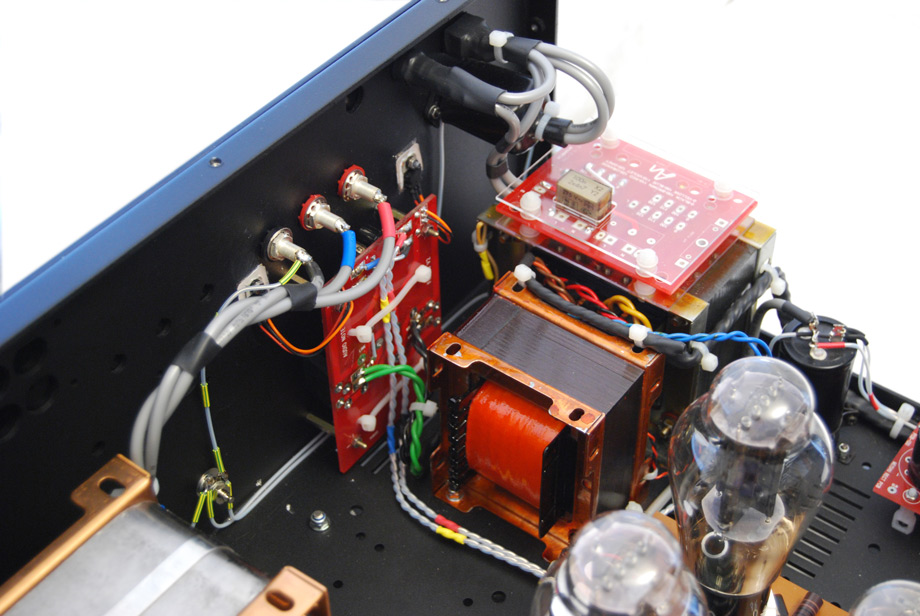Setup
The amps utilized for this review were provided with balanced input connectors and two pairs of silver binding posts to facilitate bi-wiring. I substituted Isoclean Super Focus power cords for the AC cords provided and situated the amps on Finite Element Pagode Master Reference amp stands, initially using TG Audio Teflon cones with stainless steel points. I later substituted Finite Element Cerabases for the TG cones. The change was immediately audible: tighter image focus, improvement in depth, a major improvement in bass control with tighter, better defined and less “bloomy” renditions, but at the expense of some warmth in the upper bass, much better definition of the leading edges of struck instruments, and an audible improvement in not only the ability to hear low-level detail and ambient information but also a general improvement in transparency.
Each amp was plugged directly into an Oyaide R-1 outlet on a dedicated line. With respect to the choice of power cords, the amps liked both the Isoclean Super Focus and the Acrolink Mexcel. The distributor has also has excellent luck with the Elrod and Nordost power cords.
The loudspeaker used for review purposes was the Acapella Triolon Excalibur which has been previously reviewed in these pages. Past experience has shown the Triolons to be an awkward load for both transistor and tube electronics, partly as a result of the impedance (which varies from a peak of 30 ohms at 28 Hz to a minimum of 1.9 ohms at 70 Hz, but is ruler flat from 100 Hz to 50k Hz at approximately 5 ohms), partly as a result of their resolution. Other amps auditioned on the Triolons which have provided a basis for comparison include the Edge NL Reference, the Edge Signature One, the Lamm ML1.1, the Lamm ML2.1 and the single-ended AN UK Kegon.
Dynamics
It became clear early in the listening that the number of watts specified for each of these amps was not an accurate indicator of how well a particular amp would perform into the load presented by the Triolons. Peter Qvortrup , the owner of AN UK, has stressed in the past that many high-power designs lack the dynamics of lower power, well designed amps because the higher power amps are unable to deliver their power with equal efficiency at all frequencies. He refers to this ability as “unrestricted linearity”. At no point after the initial break-in period was there ever any question that these amps had more than enough power to drive the Triolons at the levels at which I normally listen with no sign of clipping or reduced dynamics. Indeed, the KBs had better micro- and macro-dynamics than the two Edge solid-state behemoths.
Normally, when we speak of wide dynamic swings, what we really mean is that an amplifier can accelerate from loud to really loud with great speed and precision. The KBs do excel in this area . They are also masters of micro-dynamics and resolution of low-level detail. By micro-dynamics, I mean moving from almost silent to very soft volume levels . This seems to be related in part to noise floor, or rather having very low “self noise”. The deeper that an amp allows you to hear into the background noise/low level ambient detail, the more apparent that subtle dynamic shifts become. The problem is that in most instances, these subtle dynamic shifts are below the threshold that dynamic speakers will produce, audible only on the better horns and some electrostatics, like the Crosby modified Quad 63s.
The KBs also bring a linearity to the entire dynamic envelope. There are no frequency dependent dynamic anomalies. Many years ago, I auditioned a Levinson HQD system. One memory that I took away from that listening session was how the Hartley subwoofers seemed to get loud much more quickly than the Quad midranges or the Decca tweeters, thus calling attention to themselves. Amps are often guilty of similar misbehavior. In my own listening, I have particularly noticed that, with some solid-state amplifiers, the high frequencies do not have dynamics equal to the bass or midrange.
- ← Previous page
- (Page 2 of 4)
- Next page →



Nice Review!
I never understood why AN put the Kegon Balanced and I believe Kageki Balanced too in a unattractive cube box instead of using something more like the Gaku-On box.
Cheers!
geht mir auch so.ich hatte bis Gestern die gakuon verstärker und seit heute die 300B Kegon
der Klang ist fantastisch.Schade das sie so verkleidet sind.
I feel the same way. I had the Gakuon amplifier until yesterday and since today the 300B Kegon
the sound is fantastic, it’s a shame they are so disguised.
Hans,
Greetings. I purchased the review samples and continue to use it in my system. Both the Balanced Kegons and the Gakuons are Level 5/6 Audio Note products so one might think that they sound alike with the Gakuon having more power; however, they sound very different due to the difference in output tubes (300B vs. 211). Each tube has a very distinct sound, particularly if the 300B used is a 1970’s or earlier Western Electric and the 211 is a vintage GE. I would be curious about your thoughts as you have owned both. What output tubes are you using and what is the rest of your system? I am still using Acapella Triolon speakers.
Fred